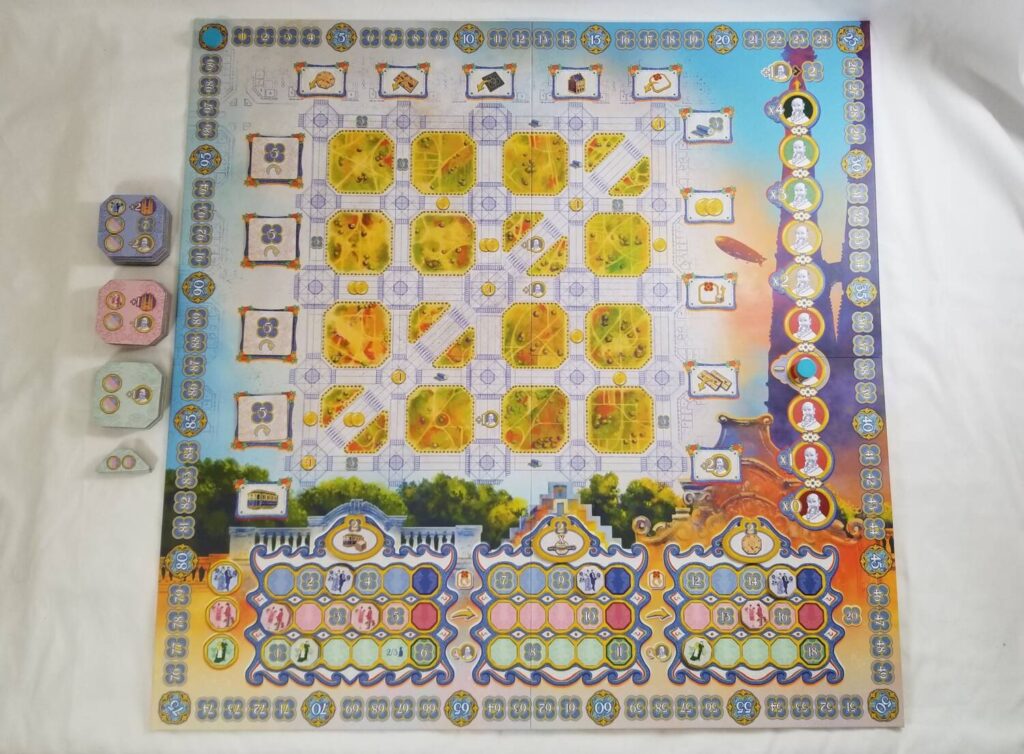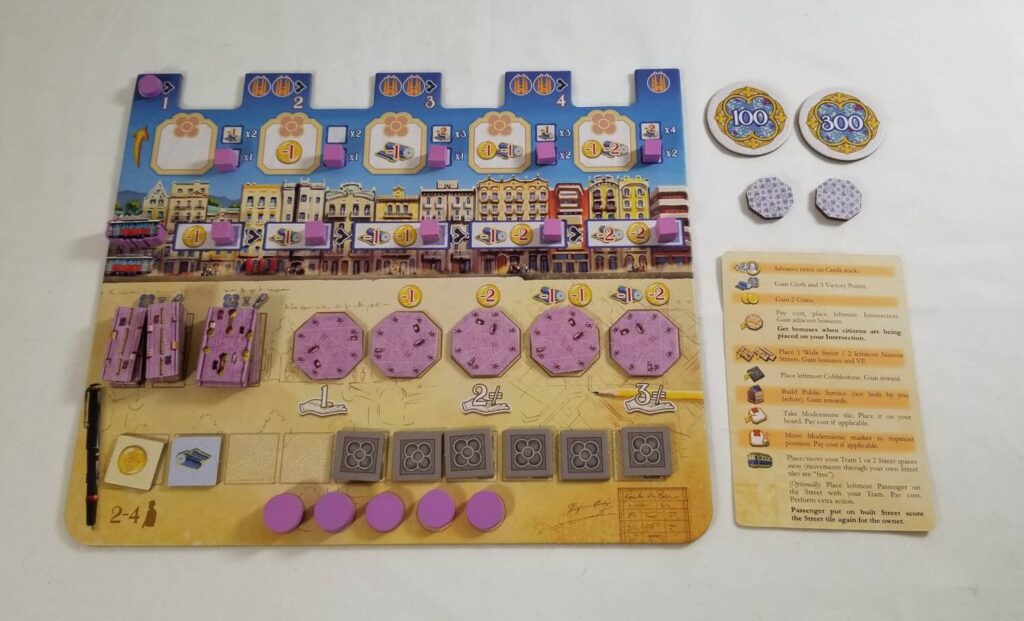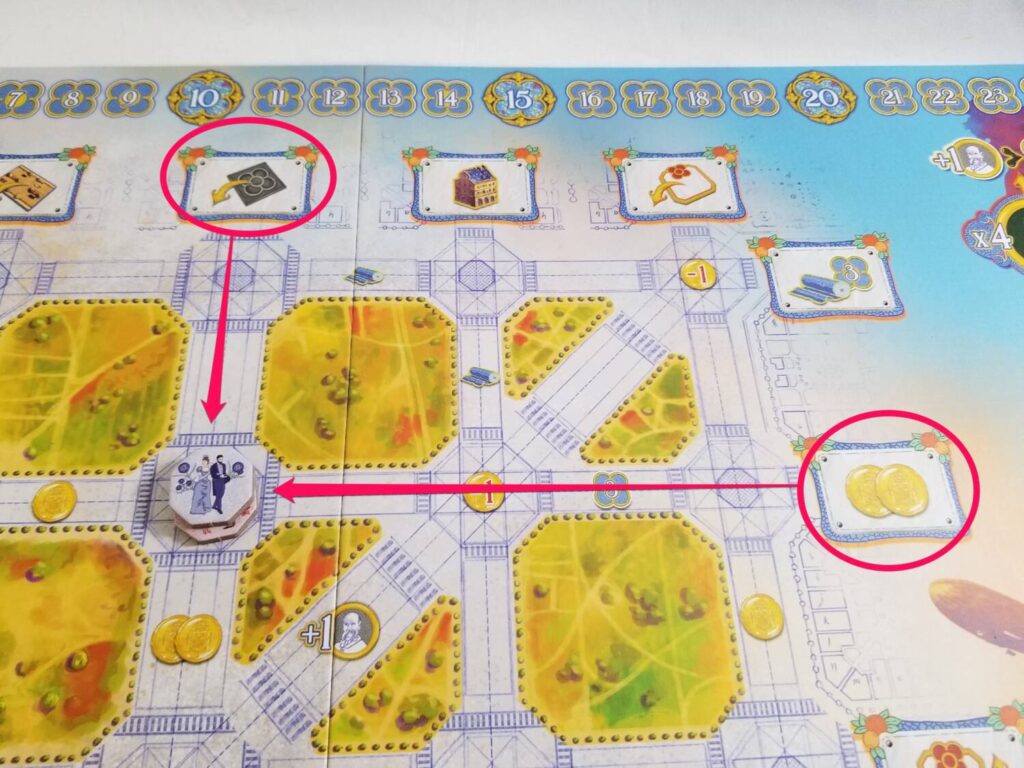For the longest time, Barcelona was a city behind walls. Initially, this served the city well, keeping out the unwanted while protecting those within. But, the population explosion in the mid-1850s changed all of this. As the population swelled, the space within the walls began to become cramped leading to much higher mortality rates and the easy spread of disease.
Then came Ildefons Cerdà, a civil engineer, with an interesting idea (the Eixample, as he called it). He proposed a new city district beyond the walls, but not just any city district. His idea was to approach urban design scientifically with a layout featuring wide streets so that every building within the district would be able to enjoy the light of the sun. His plan also included plenty of green spaces to make the air more breathable and to provide areas for socialization. And, he also envisioned the district’s iconic octagonal buildings, which would provide more visibility at street crossings.
The game of Barcelona drops the players into the mid-19th century during this expansion. As the game begins, the district is little more than a blueprint composed of building plots, the roads running alongside them, and the intersections where these roads meet. Each of these roads has an action associated with it. On their turns, players draw citizen tiles out of a bag and then place them in a stack onto one of the unoccupied intersections to perform the actions associated with the roads, build things, and score points. And that’s the ultimate goal: score the most points.
Of course, this is a very high-level overview of the game. If you think you’ve got the gist and just want to know what I think, feel free to skip ahead to the Thoughts section. Otherwise, read on as we talk about how to play a game of Barcelona.
Blueprints
A game of Barcelona is set up thusly:

The Main board is laid out before the players. The four Building Bonus tiles are shuffled together and placed onto the marked spots, one to each spot. If playing with fewer than four people, some of the spaces on the Citizen track, at the bottom of the board, get covered up with matching Citizen tokens. The remaining Citizen tokens are stored in the cloth bag. Additionally, and optionally, the players may use the included Action tiles to cover up the pre-printed action spots on the board if the players desire some variability. Choose three Cerdà tiles at random and place one above each of the Citizen track areas. The unused ones are returned to the box.
Then, set up the Side board. This board is populated with a stack of face down Modernisme tiles (four of which are turned face up) and five sets of randomly selected Public Service tiles. These tiles provide end-game scoring opportunities and, in the case of the Public Service tiles, even some instant benefits that occur the moment the tiles are obtained. The bottom half of this board features a gridded area where certain tiles can be placed over the course of the game. We’ll talk more about this later.

After setting up the Side board, you’ll also create a display of Sagrada Familia tiles. There are four different sets of these and each set should be arranged in its own row, in numeric order. Then, you’re ready to move on to the Player setup.
Each player receives a Player board and all of the pieces of their chosen color: wooden discs, cubes, Intersection tiles, Wide and Narrow Street tiles, and Trams. These are all placed onto the Player board in their starting positions, except for two of the discs which are placed onto the Main board on the 0 space of the Scoring track and the starting space of the Cerdà track, respectively. Players receive six Cobblestone tiles and these are placed onto the six rightmost spaces of the track at the bottom of their boards. One marker is placed at the beginning of the Sagrada Familia track that runs along the top of the Player board. Lastly, players receive one Cloth and one Coin tile. These are placed into the leftmost spaces on the same track. Then, each player receives two Citizen tokens drawn from the bag, which they may look at, but will keep face down and hidden.

The remaining components—the VP tiles, the remaining Cloth and Coin tiles, and the Building tiles, are kept in a supply close by. With all this setup completed, a start player is chosen and given the First Player token and you’re ready to begin playing Barcelona.
Construction Begins
From the rulebook: “Barcelona is played over a variable number of rounds interrupted by three scoring phases before a final scoring phase. Every round, each player takes a single turn consisting of two or more actions, a building phase, and then preparation for their next turn. At the end of the game, the player with the most Victory Points is the winner.”

On a player’s turn, they will place their two Citizen tokens as a stack onto an empty intersection on the Main board. Then, they will have the ability to perform the actions associated with the streets that meet together to form the intersection. In brief, the actions available are:
– Gain cloth/coins: these are stored at the bottom of the Player board, but space is limited. The player may take the next action, place cobblestone, to free up some space (similar to Concordia).
– Place cobblestone: take the leftmost Cobblestone tile from the Player board and add it to the Side board. Each cobblestone laid provides the player with some kind of benefit in the form of free resources or extra actions.
– Take/improve Modernisme Projects: Modernisme projects sit along the top of the Player board. Each of these tiles provides end-of-game victory points. The victory payout can be upgraded by improving an already collected tile after paying the cost associated with doing so.
– Build wide or narrow streets: building streets will earn you victory points. And, building streets that are connected to your other streets will earn you even more. Clearing stacks of these tiles from your player board will grant movement on the Cerdà track (more on this later).
– Build intersections: Building intersections may gain you immediate benefits, but your intersections in play will always grant you benefits whenever Citizen tokens are placed atop them. The more that you’ve moved from your Player board, the better the benefits will become.
– Move Your Tram: Your tram follows the street spaces and intersections printed on the board. Its total movement is limited. When it comes to a stop, you may pay to move one of the passengers from your Player board to the space on which the tram stopped. If there is a street/intersection tile on that spot, the owner of that tile will score points. Moving passengers is important because the more you’ve moved by the end of the game, the more points you’ll score.
– Build a Public Service: Pay the cost of the top tile in one of the Public Service tile stacks and gain its immediate benefits, which will always include movement on the Cerdà track in addition to some other benefit. You can only have a single copy of each Public Service.
The People Move In
After performing your actions, you must construct a building if possible. Each building plot has several intersections on its corners. Each building type requires certain amounts and types of Citizen tokens to construct. To construct a building, select a plot and then return Citizen tokens off of the top of Citizen token stacks, from intersections bordering that plot, that match the building type’s requirements. Then, place the building you just constructed into the empty plot.

The Citizen tokens you removed are placed onto the matching Citizen tracks at the bottom of the Main board, from left to right. After you’ve placed them, look at the uncovered numbers and score points equal to the lowest uncovered number for the building you’ve constructed. If any of the Citizen tracks extend to the edges of, or beyond, the current unscored area, a Cerdà scoring is performed. Additionally, some buildings will reward the player with other bonuses in the form of movement along the Sagrada Familia track (allowing the player to claim Sagrada Familia tiles—these provide instant bonuses when claimed), bonus victory points, and movement along the Cerdà track.
You’ll end your turn by drawing two new Citizen tokens from the bag, which you’ll use on your next turn.
Cerdà Approves
The new Barcelona expansion project is Cerdà’s baby. As such, he has very specific demands and, the better you are at meeting those demands, the more pleased he will be and the more points he’ll shower upon you. There are many routes one can take in Barcelona to acquire victory points, many of which I’ve already discussed, but chief among those are the three Cerdà scorings which will occur as the various Citizen track areas are filled.
During setup, a Cerdà scoring tile will have been added to each section. When one of those sections is scored, players will earn points for how well they’ve matched the stated criteria. Then, those points may be doubled or tripled (or multiplied by zero!) depending on how far the players have moved up or down on the Cerdà track. For instance, a scoring tile may reward points for having coins on your Player board. If you’ve moved up into the 2x area of the Cerdà track, then those points will be doubled. After the first two scorings, the player’s markers are reset. After the third, those markers remain where they are for the purpose of acting as a tiebreaker during final scoring.
End-of-game points come from a number of sources—points for removed Cobblestone tiles, Passengers placed, and Modernisme tiles. The player with the most points wins the game.
Thoughts
I’ll be the first to admit it, Barcelona is A LOT. It may feel like I hit you over the head with a truckload of information, but there were a ton of tiny little details that I left out in the name of brevity. The rule book clocks in at a hefty 20 text-heavy pages. But, what lovely text it is! Interspersed throughout the rules explanation are various historical notes which serve a dual function: expounding upon the history of the city of Barcelona while also intricately tying that history to the game’s mechanics.
Consider this little snippet from the Modernisme tiles section and you’ll see what I mean: “Historical Note: Modernisme, or Catalan modernism, was an architectural style that flourished during the late 19th century and the early 20th century, with the most famous example being La Sagrada Família. Cerdà’s plan for the city was to make all buildings look similar so that all citizens would live in the similar buildings regardless of their wealth. Many Modernista architects disliked the idea, however, because that vision clashed with the exuberant and ornamented façades that architects of the time were designing. Barcelona has since become famous for many of these Modernista buildings, so this part of Cerdà’s plan evidently failed.”
I love this attention to detail. It’s completely unnecessary, but it really helps with the immersion. When playing Barcelona, one of the most exciting aspects is watching the city district take shape via my ministrations. Watching buildings rise from nothing helps me appreciate what I’m doing. The little bits of history sprinkled throughout the rule book help me appreciate why I’m doing it.
Another aspect of Barcelona that really helps sell the experience is the stellar artwork and graphic design from Aleksander Zawada and Zuzanna Kołakowska. The soft palettes of the Citizen tokens and unconstructed building tiles clash with the vibrant colors of the bustling architecture in the most pleasing of ways. Simply put, from set up to tear down, Barcelona just looks great on the table. And this isn’t just putting lipstick on a pig either. Even if you removed all the set dressing, you’d still have a really good game.
One of the first things that struck me about Barcelona was the way that the super simple turn structure—place some Citizens and build a building, if you can—downplays the tense, and often difficult, decision space that goes along with it. There may be a combination of actions that you’d like to take, but placing citizens on that specific intersection would open up a massive scoring opportunity for your opponents. Do you do it and hope that nobody notices, or do you take some lesser action instead? Is placing a stack of blue Citizen tokens at an intersection in order to build some streets and score a boatload of points worth it if your opponent is able to swoop in on their turn and build a level 3 building? Or, if it’s you doing the building, which building should you go for? Each Citizen token removed in order to construct a building goes to its track in the Citizen track area. Are those citizens you’re moving going to trigger a scoring? If so, are you prepared to capitalize on it? If not, should you build something else to ensure you’re in a better position for when that scoring does happen?
As often happens in games of this nature, your decisions are never easy, and boy are there a lot of them. So much so, in fact, that taking turns in Barcelona can be very analysis paralysis inducing if you’re not careful. So, if you dislike games that encourage that kind of behavior, be forewarned. And, while I’m talking about negatives, it’s also worth mentioning that the setup and teach for a game of Barcelona can be a bit of a bear. There’s a lot of stuff in this box and there’s a massive amount of information to disseminate. Prepare accordingly.
If none of those sounds like a deal breaker to you, then I encourage you to give this game a try. I wasn’t sure what to expect the first time that I played Barcelona, but I was pleasantly surprised by the experience that emerged. After multiple plays, that initial feeling of adulation hasn’t waned.
If anything, it’s only gotten stronger.











Add Comment